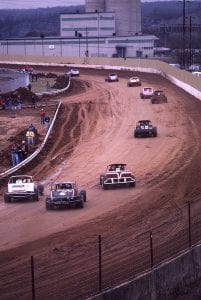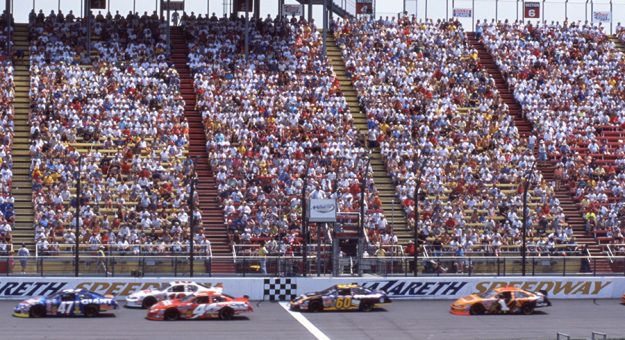In theory, at least, it should have been wildly successful: A major motorsports facility reasonably close to New York City, with good access to major highways in a metropolitan area that was growing rapidly as it transitioned into a bedroom community for the Big Apple.
It was also located where people really loved their racing. The fact that Nazareth National Motor Speedway didn’t make it, despite decades of efforts by people who were otherwise highly successful at this sort of thing, underscored that sometimes, entrepreneurial daring simply isn’t enough.
Having the first family of American racing in the neighborhood didn’t help.
Nazareth National existed, really, as a play with four distinct acts. In its original form, at 1.125 miles around, it constituted the longest dirt track in the United States. Shortened to a mile a decade past its first demise, Nazareth National was the stage for some wild promotions based around huge purses, with a heaping of hubris.
Two of racing’s leaders next took turns trying to resuscitate it. Nazareth National was big, radical and in its final iterations, a genuine showplace. Ultimately, none of that mattered.
The story of this speedway is written in the collective optimism of those who built and ran it. It began in 1964 with Jerry Fried, a onetime dance instructor from the Bronx, who was already running a dirt track in Lower Nazareth Township, Pa. Fried had an option to buy land just south of the half-mile Nazareth Raceway.
It was an irregularly shaped lot, but still near the intersection of state routes 191 and 248, with close access to U.S. 22 and the Northeast Extension of the Pennsylvania Turnpike. Nobody, possibly including Fried, knew exactly what he planned to do with it.
It’s worth noting that as Fried’s plans were simmering, a major nearby track with a big reputation was undergoing a forced transition. About 60 miles south, Langhorne Speedway disclosed plans to coat its treacherous, circular mile of dirt with asphalt, relegating its National Open for modifieds to pavement. We cannot know with certainty today, but it’s reasonable to think that Fried envisioned his site as a new showplace for the modified world’s biggest dirt shows.

Fried had contemplated some variation of this idea since he started operating the half-mile track in the 1950s. One longtime Fried lieutenant later recalled seeing a sketch of the proposed mile track covered by an all-weather dome. The actual plan had the big dirt track ringed by lights, so night racing could take place. Fried carved out a D-shaped track on the oddly shaped tract that incorporated a tunnel to the infield.
From the air, it looked like an exercise from a geometry textbook, with five distinctly non-matching corners and a decidedly uphill-downhill countenance. When the speedway opened in mid-October 1966, a packed grandstand watched ageless Frankie Schneider win the modified feature.
Schneider became the dominant figure in Nazareth National’s first existence, winning 11 times, as the track presented a variety of USAC and ARDC events in addition to the stockers. Arguably, the most memorable was Al Unser’s victory in 1968, the first USAC Championship event run at night. In July 1969, hometown hero Mario Andretti took another USAC win shortly after his sole Indianapolis 500 victory, on the same day his daughter was born.
Nazareth National presented 36 modified shows in the shadow of the Coplay Cement plant before a triple whammy of thinning crowds, fiscal losses and an acrimonious rules dispute with dissident car owners forced Fried to shutter the place in 1971. Buzzie Reutimann won the final Fried show. By this time, Langhorne was also gone and the center of gravity in dirt modified racing had pivoted north to the New York State Fairgrounds in Syracuse. That reality had a lot to do with what happened next.
Click to continue reading on the next page
